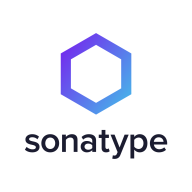

SonarQube Server and Sonatype Lifecycle compete in software quality and security management solutions. Sonatype Lifecycle may have the upper hand in security features, whereas SonarQube offers strength in customization and language support.
Features: SonarQube Server is known for customizable quality profiles, gates, and integration with CVS. It supports over 20 programming languages and provides unit tests, code coverage, quality gate controls, and has a vibrant community. Sonatype Lifecycle focuses on proactive security with low false-positive results and seamless integration into DevOps pipelines.
Room for Improvement: SonarQube Server could improve its security scanning capabilities and address performance issues in project configurations and analysis time. It could benefit from integration with more programming languages and a simpler setup process. Sonatype Lifecycle users report challenges with its user interface and suggest the need for improved integration features and flexible policy management.
Ease of Deployment and Customer Service: Both products offer extensive deployment options including on-premises and cloud. SonarQube Server is praised for community support and ease of use but lacks dedicated technical support for non-paid plans. Sonatype Lifecycle is valued for comprehensive technical support and proactive customer engagement, though initial setup can be complex.
Pricing and ROI: SonarQube Server provides a cost-effective solution, with a free version widely used and paid versions offering extensive features for larger teams. Sonatype Lifecycle, while expensive, is valued for its robust security features and is often deemed worth the investment for enterprises focused on minimizing security risks.
I have seen a return on the investment from SonarQube Server (formerly SonarQube) because the value it adds relates to static code analysis and vulnerability assessments needed for our FDA approval process.
We see productivity increasing based on the fact that the code review is mostly automated, allowing the developer to fix the code themselves before assigning it to someone else to review, thus receiving that ROI.
It's more about maintaining standards and being able to prevent issues before they occur.
We have seen cost savings and efficiency improvements as we now know what happens in what was previously a black box.
The community support is quite effective.
I would rate the technical support for SonarQube Server (formerly SonarQube) as a 10 because we have not faced any specific issues that required us to contact tech support, which is a very rare case.
They showed us where we can actually get those granular level reporting extracted for Excel, which was a quick guide.
They are helpful when we raise any tickets.
I find SonarQube Server (formerly SonarQube) very scalable because we're able to create a new repository and integrate all the tools on that project and it just works.
I would rate the scalability of SonarQube Server as a 10 because we can configure the server to scan multiple projects based on the number of lines.
JFrog is easier to configure for high availability as it does not require extra components.
I think SonarQube Server (formerly SonarQube) is stable, and we did not face any problems unless there was a power outage or if the LAN cable was plugged out.
Sonatype Lifecycle is very stable, especially in the binary repository management use case for managing binary artifacts.
If I fix some vulnerabilities today, they reappear in the next scan, and there will be completely different issues that need to be fixed.
Instead of grouping, I would prefer to scan the code as part of development and then generate a report on a daily basis among different units or projects, which is currently complicated.
As soon as I see that they've got a new feature that integrates AI that is not as generative as other GenAI platforms that actually generate the code and help developers develop faster, I believe that capability is lacking.
We also noticed a lack of detailed information for configuring Sonatype Lifecycle for high availability and data recovery.
They always offer around a two-year contract, but we always take a one-year contract because it's expensive.
I would rate the pricing for SonarQube Server (formerly SonarQube) as an 8, where 1 is very cheap and 10 is very expensive, because Coverity is very expensive, and while SonarQube is not cheap, it is still less expensive than Coverity.
The freemium version of SonarQube Server offers excellent value, especially compared to the high costs of Snyk.
For larger numbers like our case with 1,000 user licenses, JFrog becomes much more cost-effective, roughly ten times cheaper than Sonatype.
The most valuable features in SonarQube Server are static code analysis, code review, and unit test coverage, with heavy usage of all three.
Some of the static code analysis capabilities are the most beneficial.
We use SonarQube Server's centralized management and visualization of code quality metrics on the dashboard because that's the executive dashboard that we send to the executives to show where we are in terms of quality, security, and where the company can improve.
The integration into our CICD pipeline enables us to continuously monitor code changes and identify new vulnerabilities.
The most valuable feature for us is Sonatype Lifecycle's capability in identifying vulnerabilities.
| Product | Market Share (%) |
|---|---|
| SonarQube Server (formerly SonarQube) | 20.4% |
| Sonatype Lifecycle | 2.6% |
| Other | 77.0% |


| Company Size | Count |
|---|---|
| Small Business | 32 |
| Midsize Enterprise | 21 |
| Large Enterprise | 75 |
| Company Size | Count |
|---|---|
| Small Business | 12 |
| Midsize Enterprise | 8 |
| Large Enterprise | 29 |
SonarQube Server enhances code quality and security via static code analysis. It detects vulnerabilities, improves standards, and reduces technical debt, integrating into CI/CD pipelines.
SonarQube Server is a comprehensive tool for enhancing code quality and security. It offers static code analysis to identify vulnerabilities, improve coding standards, and reduce technical debt. By integrating into CI/CD pipelines, it provides automated checks for adherence to best practices. Organizations use it for code inspection, security testing, and compliance, ensuring development environments with better maintainability and fewer issues.
What are the key features of SonarQube Server?Many industries implement SonarQube Server to uphold coding standards, maintain security protocols, and streamline their software development lifecycle. In sectors like finance and healthcare, adhering to regulations and ensuring reliable software is critical, making SonarQube Server invaluable. It is often integrated into CI/CD pipelines, ensuring that code changes meet set standards before deployment. This approach enhances productivity and maintains compliance with industry-specific requirements.
Sonatype Lifecycle is an open-source security and dependency management software that uses only one tool to automatically find open-source vulnerabilities at every stage of the System Development Life Cycle (SDLC). Users can now minimize security vulnerabilities, permitting organizations to enhance development workflow. Sonatype Lifecycle gives the user complete control over their software supply chain, allowing them to regain wasted time fighting risks in the SDLC. In addition, this software unifies the ability to define rules, actions, and policies that work best for your organizations and teams.
Sonatype Lifecycle allows users to help their teams discover threats before an attack has the chance to take place by examining a database of known vulnerabilities. With continuous monitoring at every stage of the development life cycle, Sonatype Lifecycle enables teams to build secure software. The solution allows users to utilize a complete automated solution within their existing workflows. Once a potential threat is identified, the solution’s policies will automatically rectify it.
Benefits of Open-source Security Monitoring
As cybersecurity attacks are on the rise, organizations are at constant risk for data breaches. Managing your software supply chain gets trickier as your organization grows, leaving many vulnerabilities exposed. With easily accessible source code that can be modified and shared freely, open-source monitoring gives users complete transparency. A community of professionals can inspect open-source code to ensure fewer bugs, and any open-source dependency vulnerability will be detected and fixed rapidly. Users can use open-source security monitoring to avoid attacks through automatic detection of potential threats and rectification immediately and automatically.
Reviews from Real Users
Sonatype Lifecycle software receives high praise from users for many reasons. Among them are the abilities to identify and rectify vulnerabilities at every stage of the SDLC, help with open-source governance, and minimize risk.
Michael E., senior enterprise architect at MIB Group, says "Some of the more profound features include the REST APIs. We tend to make use of those a lot. They also have a plugin for our CI/CD.”
R.S., senior architect at a insurance company, notes “Specifically features that have been good include:
• the email notifications
• the API, which has been good to work with for reporting, because we have some downstream reporting requirements
• that it's been really user-friendly to work with.”
"Its engine itself is most valuable in terms of the way it calculates and decides whether a security vulnerability exists or not. That's the most important thing. Its security is also pretty good, and its listing about the severities is also good," says Subham S., engineering tools and platform manager at BT - British Telecom.
We monitor all Application Security Tools reviews to prevent fraudulent reviews and keep review quality high. We do not post reviews by company employees or direct competitors. We validate each review for authenticity via cross-reference with LinkedIn, and personal follow-up with the reviewer when necessary.